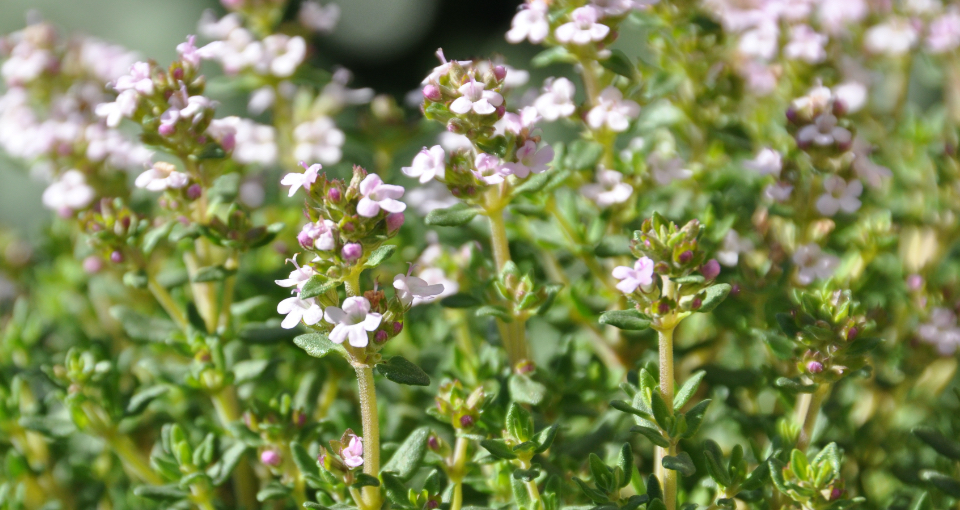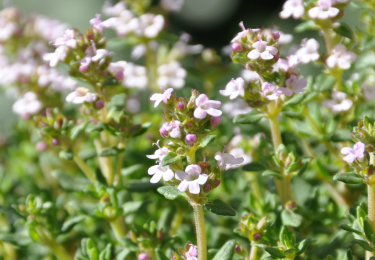
Watchlist
You can print out your watchlist and use it as a reminder for your purchase in the pharmacy.
Your watchlist currently contains no products.
Print


Thyme
Thyme
Botanik
The Common Thyme (Thymus vulgaris L.) is a perennial plant species which grows as a highly branched and evergreen dwarf shrub reaching a growth height from 10 to 40 cm. Its square-headed branches are short-haired and increasingly woody at the bottom. The short and subpetiolate leaves are greyish green and decussatly arranged. Their shape is narrow elliptic with a rolled back leaf margin. The funnel-shaped blossoms have a pale pink to bright purple colour and are arranged in a pseudowhorl at the stem ends. Blooming time is from may to october. The Common Thyme is found on dry, stony and chalky grounds and prefers hot and dry climate.
mehr
Geschichte
Originating from the European Mediterranean area, the Common Thyme is known as a spice and medical plant. Its fresh or dried leaves are commonly used as a strong condiment in the Mediterranean cuisine. As a medical plant, thyme already found utilization in ancient times where Greek physicians like Dioscorides used it for treating respiratory diseases. In the Middle Ages, the plant was recommended for pertussis by Hildegard von Bingen. Nowadays, its essential oil is applied not only for treating respiratory diseases but also for the treatment of indigestion, muscle ailments or fungal infections. In 2006, the Common Thyme was awarded medicinal plant of the year.
mehr
Inhaltsstoffe
Thymus vulgaris has a chemical polymorphic variation concerning the present monoterpenes in its essential oil. In that regard, a distinction is made between 6 chemotypes that are characterised by the particular major component of the oil: 1) geraniol, 2) linalool, 3) α-terpineol, 4) trans-thuyanol-4-terpineol-4, 5) carvacrol, 6) thymol. [1] Beside these monoterpenes, thyme oil contains flavonoids, p-Cymene, tannins, triterpenes, phenolic acids and biphenyl.
[1] Thompson, J. D. et al. (2003). Qualitative and quantitative variation in monoterpene co-occurrence and composition in the essential oil of Thymus vulgaris chemotypes. Journal of chemical ecology, 29(4), 859-880.
mehr
Hinweise/Besonderheiten
Plant communities
In natural surroundings, the Common Thyme often grows near to other dwarf shrubs such as certain Cistus species. Together they build a sympathetic plant community (Cisto-Lavenduletea).
mehr
Produkte mit Thyme
Mycea® Nagelpflegeöl
Mycea® nailcare oil
